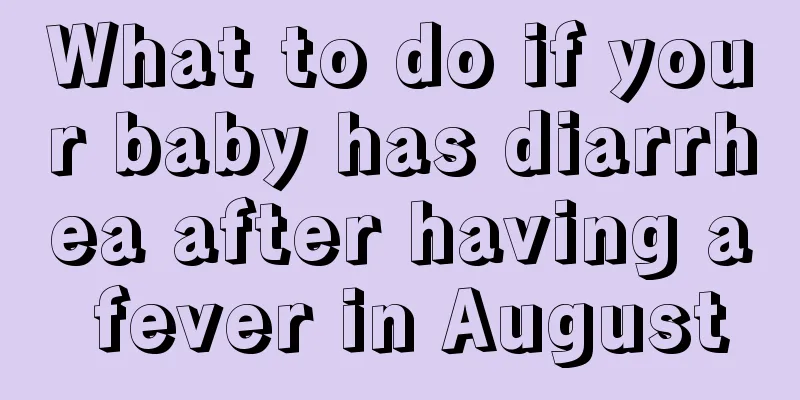What to do if a child has a rash

|
When children are young, they usually don't pay attention to their clothes, or they are allergic to some items, which causes rashes on their children. Parents all know that rashes are itchy and unbearable, and children will scratch, and some rashes are contagious. So let's find out how to care for children. Rash diseases are common in infancy and childhood. Some rashes are very similar and difficult to distinguish. There are also many seemingly plausible folk legends that people with rashes should not go out, stay in the wind, or take a bath. These are incorrect ideas. Let us learn about them together. (1) Roseola infantum The most important feature is that the sick child will have a fever for 3 to 5 days, which may be accompanied by symptoms of upper respiratory tract infection, such as cough and runny nose. When the fever subsides, red maculopapular rashes will appear, starting from the trunk and gradually spreading to the neck, face, and limbs. These rashes usually do not itch and do not leave any marks. When caring for the child, the most important thing is to pay attention to the high fever period, which sometimes causes cramps but is usually benign and leaves no sequelae; during the rash period, the child can go out, take a bath, and does not need to abstain from certain foods. measles The symptoms are high fever, cough, runny nose and conjunctivitis. Small white spots called Koplik spots will appear on the cheeks of the mouth, followed by red maculopapular rashes that spread from the face, neck, upper limbs to the trunk and then to the lower limbs. The rash then fades in sequence, and the skin desquams and leaves pigmentation. The above tells parents what to pay attention to when children have rashes. During the rash period, parents must take good care of their children to prevent eczema from spreading to various parts of the body due to scratching. Children’s clothes should also be washed using children’s special laundry detergent. |
<<: Prevention and nursing of severe pneumonia in children
>>: What to do if your baby has white spots on his nails
Recommend
What should I do if my newborn baby has a poor appetite?
A person's appetite directly affects our grow...
What causes memory loss in children?
Memory is very important for children, especially...
Baby screaming loudly
When babies are young, they cannot speak, so thei...
How to prevent vitiligo in children?
If parents find some white spots or white spots o...
Symptoms of delayed physical development in infants
Physical retardation is a manifestation of childh...
What should I do if my child keeps coughing?
Constant coughing is a common problem for many pe...
The reason why babies have white hair
You know, it is not an easy thing to know how to ...
What to do if your child has otitis media
Many mothers always complain that their children ...
What are the reasons why babies often hiccup recently?
If a baby hiccups frequently, parents will be ver...
Why do newborns sleep with their eyes half open?
Babies are the angels of every family. Careful mo...
What causes headaches and dizziness in children?
Children's health is an issue of particular c...
What should we pay attention to when treating burns in children?
If a child gets burned in real life, burns here r...
Why is the baby's belly hard when he is one month old?
Many newborn babies are not fully developed in al...
What causes knee pain in children?
Knee pain is a problem that troubles many elderly...
The child is too timid to speak
The chance of a child being born timid is very sm...









